“Not only did I learn a lot about how to make and interpret information from surveys, I also learned a lot about what seems to make people happy here at Watershed and around the world. This experience made me realize that being in nature and finding ways to give back to people makes me happy. It made me realize that when I’m not feeling happy, I can do things, take action, to change that.”
– Harry, 8th grade
How Do You Measure Happiness?
Inspired by her research last summer at the Fulbright-Hays Seminar in Finland, middle school educator Amy Robbins, Ph.D., designed the 8th grade Project Happiness Expedition course, and worked in collaboration with co-educator, Locke Hassett and his Transformations of Thinking & Self course on the development of the first Watershed Happiness Report.
Centered about the guiding question: How do you measure happiness? students explored different weekly themes including the role of nature, play, helping others, trust, sustainability, and different cultural concepts around the world related to happiness. They read Rick Hanson's Hardwiring Happiness, analyzed Our World in Data's Happiness and Life Satisfaction reports, and engaged in weekly happiness actions using Action for Happiness's monthly calendars.
From Inquiry to Data: Designing a Happiness Survey
To develop their own research, students examined the World Happiness Report and discussed which elements they wanted to include in their survey. They then met with Shay Castle, Editor-in-Chief of Boulder Weekly, who has reported on life satisfaction surveys in Boulder County. Shay guided students through brainstorming survey topics and question design.
Next, the class worked with Dr. Roselinde Kaiser and Dr. Alicia Sepulveda from the University of Colorado, Boulder’s Center for Healthy Mind and Mood. Drs. Kaiser and Sepulveda led students through an exploration of how biology, beliefs, self-perception, relationships, emotions, and resilience influence happiness. With this framework students refined their survey topics and crafted research questions. Based on student-generated survey statements and priorities, the experts drafted a survey for the class to further edit and finalize.
Gathering Insights: What Makes Watershed Happy?
Once the survey was finalized, 8th graders deployed it to Watershed students and staff. With guidance from Drs. Kaiser and Sepulveda, they analyzed their data using accepted social science research methods. In pairs, students wrote research reports interpreting the data in relation to their hypotheses, culminating in a final class report, which they shared with the Watershed community.
Expanding the Conversation: From Watershed to the World
Beyond Watershed, Amy presented on the process at the poster session of the Fulbright Symposium in Washington, D.C. in February. As part of her Fulbright-Hays Fellowship curriculum project, she will share the final report – along with her unit plan for the Project Happiness Expedition course – with the U.S. Department of State and Fulbright Finland.
Looking ahead, Amy envisions expanding Project Happiness beyond Boulder:
“Project Happiness was a blast! We had lots of opportunities for learning through doing, and I especially loved hearing students reflect on how they can support their own happiness and the happiness of those around them. I'd love to build in an aspect of international collaboration in future years, hopefully with Fulbright connections in Finland and Morocco. This is important work for middle school students to be doing here in Boulder and around the world.”




